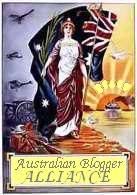PRIORITIES, GET YOUR PRIORITIES STRAIGHT, WHEN YOU KNOW WHAT'S IMPORTANT SAYING NO GETS MUCH EASIER.
The Block's still seethingBy Martin ChulovAugust 18, 2004
A COOL wind swept across the streets of Redfern yesterday. Rain fell for the first time in months as Gail Hickey left the inquest in tears after being told how her son TJ died on a fence pole.The blast of winter was a far cry from the scorching evening six months ago when her Redfern neighbourhood, known as the Block, exploded in the worst rioting Sydney had experienced in decades.
That night, February 15, was a throwback to an incendiary time that successive state and federal governments wished had been buried -- a period when an isolated, race-based underclass raged publicly against authorities.
The ugly February 15 images of street battles that flashed across the world for weeks could easily have been shot during the notorious Los Angeles race riots 10 years earlier or in south London in the 1980s.
The message appeared to be clear: in 2004, racial tension in Australia was alive and kicking.
At the Glebe Coroner's Court yesterday, NSW coroner John Abernethy found that the incident that sparked the riot -- TJ Hickey becoming impaled on a fence pole early on February 15 -- was a "freak accident".
He said there was no evidence to support the community's belief, which later sparked violence, that police had been chasing TJ when he fell from his pushbike on to a fence pole.
The crucial finding was not accepted by residents of the Block, who remain convinced TJ would not have died without police involvement.
"No justice!" shouted one friend of the Hickey family as the coroner's finding was read out. Gail Hickey wept uncontrollably.
At the Block later in the day, Scotty Prince punched the air with a people power salute as the police walked by. He was from the bush and said he was used to witnessing the oppression of indigenous people.
"If we all got together from the bush and the city, there is a lot we could do," Prince said yesterday. "We are trying to prove to the world that we are not just disadvantaged [but that] they are still killing us. It is legalised terrorism.
"It is on a larger scale in the bush. It is happening to a lot of kids all around the country. We know that the police are guilty."
The distrust in the Redfern community is almost institutionalised, born of a mix of entrenched resentment and decades of experience.
The Block is unique in Australian Aboriginal and socioeconomic history. It holds rich cultural and social significance for many residents, whose ancestors once used it as a base when travelling to Sydney to visit friends and family in hospital or prison.
A core group of Aborigines came to the area in the 1940s to find work in the nearby railway yards or to join relatives who had already made the pilgrimage from tribal homelands.
In the '70s, the Block became a key launch pad for the push for indigenous self-determination.
Throughout the past two decades, it has been both a haven for the homeless and a rallying point for the indigenous protest movement against a succession of governments that activists claim have marginalised or ignored Aboriginal interests.
Viewed through this prism and with even a whiff of police involvement in TJ's death, a "freak accident" finding was never going to be an easy sell for this community.
After six months of simmering distrust, these are the facts according to the coroner. Early on the morning of February 15, local youth Christopher Carr allegedly snatched a bag from a woman walking outside Redfern station. The chilling images, caught on closed-circuit television, showed the woman being dragged along the road, desperately clinging to her bag. Later that day, a police patrol was cruising the Block and its surrounds, looking for Carr.
Towards mid-afternoon the patrol, Redfern 16, saw TJ riding fast on his pushbike across a park and down Renwick Street. Redfern 16, containing constables Michael Hollingsworth and Maree Reynolds, followed TJ as he rode his pushbike across a park and down a narrow laneway leading to the back of a housing commission tower. They pulled up when the laneway narrowed and walked around the back of the building, where the fleeing TJ had turned left. They found him impaled on a residential fence, having been flung from his bike. He died in hospital nine hours later.
Friends of Gail Hickey and community members took comfort yesterday from the coroner's finding that police had been following TJ before his death. He did, however, make a key distinction between following and pursuing -- a word that would have added impetus to the claim of police culpability. Carr, whom the police were after, looked too unlike TJ for police to confuse the two, the coroner found.
"People are still trying to talk it through, the family is having a talk, everyone is quite shocked," said community leader Kay Mundine.
"It is a time when people feel protective. People were expecting a lot more. It is not about justice, it is about the law. We have a long journey with the family. It was a horrific death."
On the night of February 15, there was little talking. At about 9pm, a crowd of up to 150 people gathered outside the Redfern railway station.
Among them were members of a forsaken community who believe their disadvantage is reinforced by police and other authorities. Also scattered among their ranks were opportunists -- criminals quick to seize on any chance to take the fight to the police, with or without provocation.
During the six-hour running battle in the street, police and fire brigade officers were pelted with rocks, cement, bricks, fireworks and petrol bombs. About 40 officers were felled, the train station was set alight and surrounding houses were damaged. Surveillance cameras caught many of the rioters and the following week police arrested 15 youths, charging them with affray and acts of violence.
By the time the coroner's findings were delivered yesterday, the rage of February 15 had lost much of its heat. But there are simmering tensions that, police say, could reignite with little warning.
In the months since the riot, the Block has twice been raided by dozens of police searching for heroin and other drugs, and the dealers who supply locals.
"You learn from exceptional circumstances and the police will learn from this as we learn from every disaster," says NSW Premier Bob Carr.
"Every possible lesson will be learned from the police and community experience in this."
This is the same mantra that politicians of every stripe have recited over the decades. Despite good intentions, there has been little progress in attempts to increase the level of harmony between contemporary Aboriginal Australia and the country's wealthiest city.
There are few signs that Whitlam minister Tom Uren's well-intentioned '70s idea to set up the Block, a low-cost, self-contained enclave in which Aborigines could help each other cope with urban life, has any chance of enduring.
At the time, there were grim warnings that ghettos would instead emerge. It didn't take long.
Rather than becoming an epicentre of self-sufficiency and progress, the Block has instead become a site of despair. In such a toxic environment, distrust will continue to simmer.
I STILL MAINTAIN THAT RED, WHITE, GREEN OR WHATEVER, THE KID WAS UNDER SUSPISCION. AS SOON AS YOU MENTION HE WAS BLACK YOUR CALLED A RASCIST.






0 Comments:
Post a Comment
Subscribe to Post Comments [Atom]
<< Home